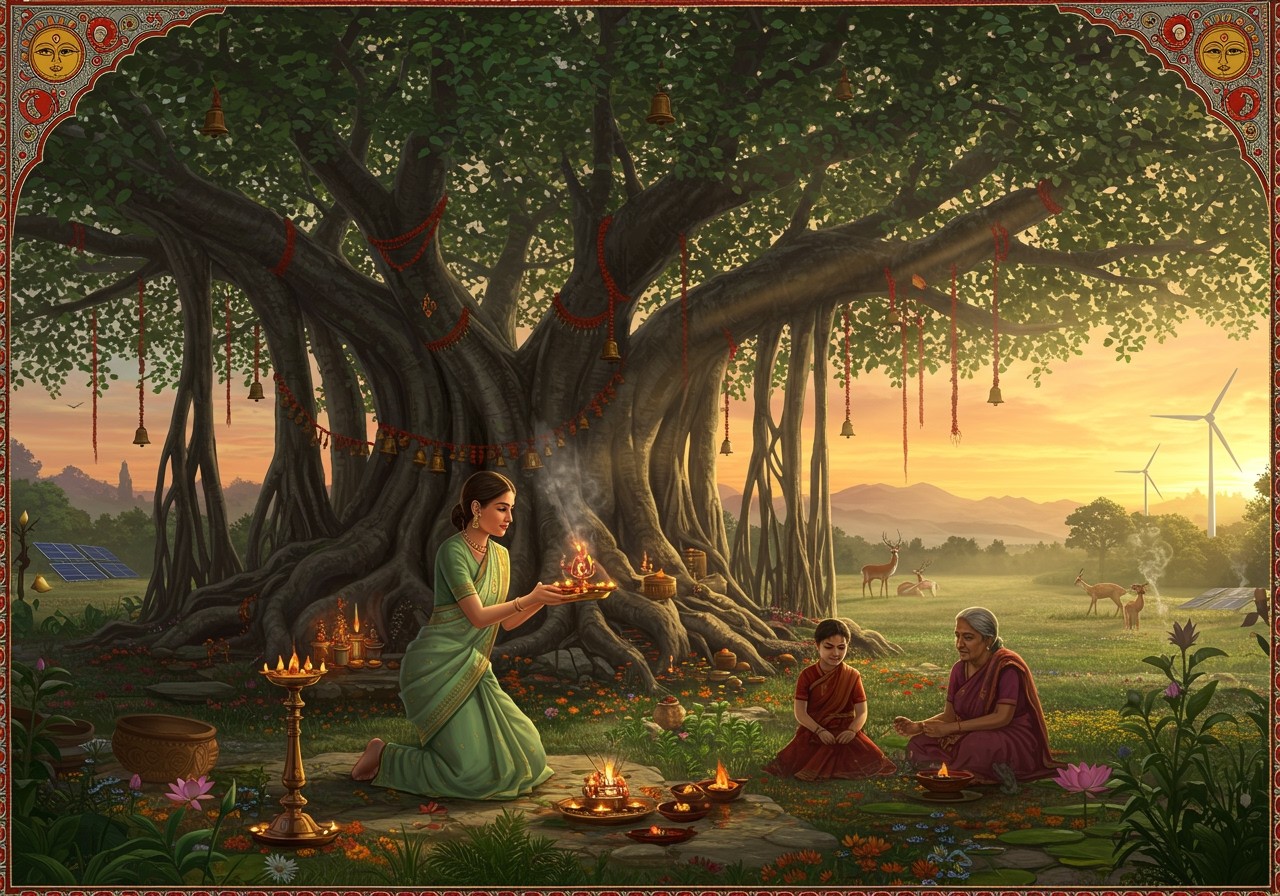
In India, reverence for nature is a time-honored tradition, deeply connecting people with the natural world. This practice, spanning centuries, reflects both ancient beliefs and contemporary adaptations. Understanding this symbiotic relationship can bring spiritual fulfillment and a sense of authenticity to many today.
Nature Worship in Ancient India
Nature worship in India has roots in the Indus Valley Civilization. Vedic scriptures emphasize the divinity of natural elements such as Surya (the sun), Vayu (the wind), and Varuna (water). Sacred groves, forests, and rivers held immense cultural significance, serving as venues for rituals and festivals. Celebrations like Makar Sankranti and harvest festivals honored nature’s abundance. Temples and architecture often incorporated natural elements, reinforcing nature’s sacred status.
These traditions continue to influence modern practices, maintaining the vital connection between humans and nature.
Hindu Deities of Nature
In Hinduism, nature and divinity are inextricably linked. The natural world isn’t merely a setting but a vibrant expression of divine energy. Each element and force embodies a deity, making the universe a living manifestation of sacred power.
Prithvi (Bhumi) – Mother Earth
Prithvi, also known as Bhumi, personifies Earth itself. She nurtures all life and provides sustenance. Often depicted seated on a lotus, she symbolizes fertility and stability. Prithvi is honored in rituals that celebrate the land and agriculture, reminding us of our responsibility to respect and care for the planet. You can find items for worshipping Prithvi Mata, such as organic turmeric, kumkum, and clay diyas at poojn.in.
Agni – The Fire God
Agni, the god of fire, plays a central role in Vedic rituals. Fire signifies purity, transformation, and divine presence. Ceremonies like Havan involve offerings to Agni, symbolizing the connection between humans and the divine. This practice highlights fire’s purifying nature and its role as a mediator between realms. Poojn.in offers Mangalam Camphor, perfect for fire rituals and creating a sacred atmosphere.
Varuna – Guardian of Oceans
Varuna governs the oceans and waterways, ensuring cosmic order and justice. His presence is felt in rituals near water bodies, emphasizing respect for aquatic life and ecosystems. Varuna’s worship fosters an appreciation for water’s life-giving properties and encourages conservation. Find pure copper Kalash and other items for water offerings at poojn.in.
Vayu – The Wind God
Vayu, the god of wind, embodies the life force or prana. This deity is essential in breathing exercises like Pranayama, which promote health and mindfulness. Vayu’s symbolism teaches the importance of balance and rhythm in life, as seen in the gentle breeze or a powerful storm.
Indra – Ruler of Rain and Thunder
Indra commands rain, lightning, and thunder. He is a warrior who combats drought and brings fertility to the land. Indra’s festivals celebrate the monsoon, crucial for agriculture. His stories inspire courage and resilience, guiding communities through natural challenges. Learn more about Lord Indra in this insightful blog post: Lord Indra: The King of Gods in Hinduism.
Aranyani – Spirit of Forests
Aranyani is the goddess of forests, symbolizing wild nature and its mysteries. Her worship involves songs and dances in sacred groves, reflecting the joy and abundance of untamed wilderness. Aranyani encourages protection of biodiversity and harmony with wildlife. Explore the sacred relationship between Hinduism and nature in this blog post: Hinduism’s Sacred Relationship with Nature.
Poojn.in: Supporting Nature Worship
Poojn.in offers a wide selection of authentic puja items and resources for nature worship rituals in India, catering to various natural elements and deities:
- Sun Worship (Surya Devta): Pure copper Surya Arghya vessels, red flowers, akshat, special Surya Yantra, and Jal offering items.
- River Worship (Ganga Mata): Brass aarti lamps, pure copper Kalash, natural cotton wicks, and Gangajal in sealed containers.
- Earth Worship (Bhumi Mata): Organic turmeric and kumkum, natural cotton asanas, clay diyas, and copper vessels for water offerings.
- Tree Worship (Vriksha Devta): Sacred thread (mauli), organic gulal, copper watering vessels, and natural incense.
Poojn.in ensures all items are traditionally crafted and ritually pure, with usage guidelines in both Hindi and English. With delivery across India, these sacred items are easily accessible for modern nature worship practices while preserving traditional authenticity. Visit poojn.in for current product availability and pricing.
Embracing Nature in Modern Times
Nature worship in India continues to flourish, blending ancient reverence with modern awareness. Honoring these deities signifies embracing both tradition and responsibility. Each god and goddess teaches us to live in harmony with nature, emphasizing our sacred bond with the environment. In today’s world, with growing environmental concerns, these practices are increasingly relevant. By integrating these timeless rituals into our lives, we contribute to a sustainable future. Let us cherish and protect our natural world, honoring the divine presence in every tree, river, and breeze.
FAQs on Nature Worship
What is nature worship in India? Nature worship in India reveres natural elements like trees, rivers, mountains, and animals, viewing them as sacred and often associated with gods and goddesses. This tradition has ancient roots.
Why was nature worship important in ancient India? It connected people to their environment, emphasizing the balance between humans and nature. It also played a role in agriculture and daily life, fostering respect and gratitude for nature’s gifts.
How is nature worship practiced today? It’s practiced through rituals, festivals, and conservation efforts. Events like Vana Mahotsav promote tree planting and protection, while prayers to rivers and mountains keep ancient traditions alive.
What are some examples of nature worship in Goa? Goa’s nature worship includes festivals like Shigmo, honoring the harvest and natural abundance. Locals also revere and protect sacred groves and trees.
Are specific trees or plants worshipped in India? Yes, trees like Peepal and Banyan are commonly worshipped, along with the Tulsi plant, revered for its medicinal and spiritual significance.
How do modern and ancient practices differ? Modern practices often incorporate environmental awareness and conservation, adding a focus on protecting nature for future generations to the ancient focus on ritualistic worship.
What role do festivals play? Festivals are vital, bringing communities together to celebrate nature’s bounty through rituals, songs, and dances that highlight nature’s importance in daily life.
Can anyone participate? Yes, nature worship is open to everyone, regardless of background, emphasizing respect and gratitude for the natural world.


